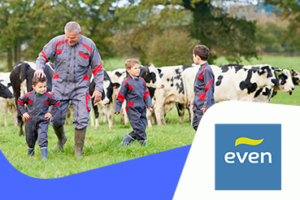


Localization
Germany

Industry
Food & Beverages
Company Overview
Over the past five decades, YOGI TEA® has made delicious, functional teas inspired by the ancient holistic healing philosophy of Ayurveda. The company has also expanded to address specific needs with specialized herbal formulas blended for both delicious taste and healthful benefit. Today, Yogi has over 50 tea blends made from ethically-sourced 100 exotic spices and botanicals.
The profit arm of a non-profit organization, YOGI TEA® is driven by strong values encapsulated in their motto: Feel good. Be good. Do good.
- Industry: Beverage
- Founded: 1972
- Headcount: 300 employees worldwide, speaking 25 languages
- Headquarters: Hamburg, Germany – Eugene, Oregon
- Website: www.yogitea.com/en
Absorbing Rapid Growth and Navigating Transformation
Yogi is no longer the small company it used to be. Having tripled turnover between 2011 and 2021, the firm saw a sharp increase in project activity. However, headcount growth didn’t match that pace. As a result, a limited resource pool had to absorb an ever-increasing workload.
The pressure was further exacerbated by the transformational projects required to sustain Yogi’s organic, ethical, and responsible business model. Initiatives were launched to curb carbon footprint, collaborate with farmers to improve soil regeneration, secure future-proof supply chains, and more. Crucially, the firm has initiated a globalization process to better integrate its European and North American branches.
When Martin Raza joined the company as Global Senior Project Manager in 2021, he found pressed-for-time project teams who often had to work double shifts to meet schedules. And he was tasked with finding a fix.
In Search of a System to Improve Visibility and Solve Resource Issues
It could be argued that the spreadsheet collections formerly used to plan and manage projects were fueling the resource scarcity issue.
Without consolidated visibility over the project pipeline, it was impossible to prioritize effectively. The lack of central planning prevented timely identification and management of project dependencies. The absence of capacity and resource utilization overviews created recurring overbooking and bottleneck issues.
What’s more, maintaining the spreadsheets manually required a lot of grunt work from team members, further feeding their time problems. It was time for a change in process and toolset, starting with the adoption of a professional PPM tool.
Martin Raza and his team put together a comprehensive list of solution requirements to guide the selection process:
- a single data pool consolidating all the information with the ability to generate reports,
- insight into resource utilization to detect problems early on,
- prioritization capabilities to focus limited resources on the most important ones,
- advanced portfolio management functionality to support business growth,
- compatibility of the out-of-the-box version with the firm’s process and usage to minimize configuration effort,
- scalability to meet the globalization and growth challenges.
Spoiler: Sciforma PPM met them all.
The Sciforma Effect
A year after rollout, Sciforma has become Yogi’s project knowledge management base. The platform now consolidates project information, templates, processes, lessons learned, and basically everything project related.
Shared data visibility, with an overview of project interdependencies, has greatly facilitated the creation, planning, and tracking of projects. Specific tools like project templates that can be stored in the tool and retrieved quickly when needed are accelerating PM work while also building up organizational knowledge and driving continuous process improvement.
Clearer responsibilities have translated into improved collaboration and streamlined communication. Decisions are now made according to hard data, as opposed as to gut feelings.
We are now able to create, manage, and deliver projects much, much faster. The quick wins we’ve been able to demonstrate have helped us create acceptance company-wide, including with leadership.
Martin Raza, Global Senior Project Manager
Importantly, this newfound clarity has gone a long way towards solving Yogi’s key pain point: resource overallocation. Centralized planning and prioritization help build realistic capacity plans. The platform enables fact-based identification of resources overloads and facilitates action, driving increased responsiveness into the project management process.
The Sciforma effect on Yogi Tea is not only noticeable but above all demonstrable. Just consider the figures:
- 14% increase in projects completed
- 12% increase in project success rate
- 50% improvement in resource utilization
- 50% reduction in time spent on project administration or data processing tasks
Yogi’s Recipe for Successful Implementation
The usability of Sciforma PPM may have done a lot to ease adoption. However, much of the credit should go to Martin Raza’s strategy to advertise the new system, accelerate onboarding, and empower users.
To ensure employee involvement throughout the entire process, he identified a team of key users tasked with providing training and guidance to other employees. Role-tailored training, regular communications and Q&As (both during and after implementation), and live support sessions were designed to acquaint everyone with the use of the tool. Celebrating small successes also helped keep the team motivated throughout the process.
Sciforma’s Andreas von Könemann introduced me to a change management concept that helped us manage expectations internally: Crawl, Walk, Run. It’s about taking a gradual approach to implementation, starting slow, then accelerating in due time.
Martin Raza, Global Senior Project Manager
Continuing the Journey
Despite the impressive initial results, Yogi still needs to deal with ongoing challenges. These include pressing ahead with user adoption to engage those users with lesser digital maturity; increasing adherence to the resource management process; and encouraging increased engagement and support from executives.
Moving forward, Martin Raza plans to expand the use of Sciforma within the firm. Chiefly used for product development projects so far, the platform will also help manage sustainability and infrastructure initiatives.
Also on the agenda is the rollout of additional capabilities of the tool, including work items for non-technical roles, the ROI and finance module, as well as the idea and strategy management module to make sure that all suggestions are heard.
Finally, greater integration between the European and North American branches will call for the use of a single system – which might well be Sciforma.






